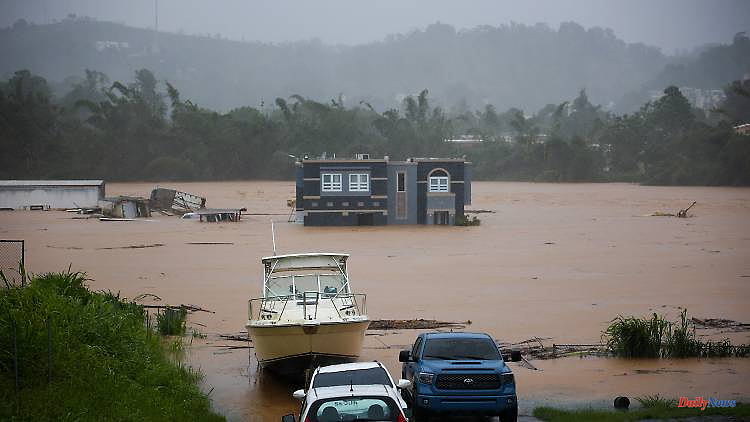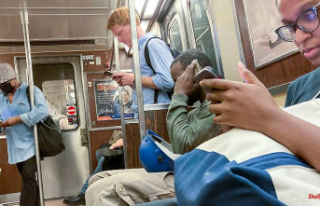Hurricane Fiona causes flooding and devastation on the Caribbean island of Puerto Rico. The already ailing power grid also collapses. And the danger for the islanders is not over yet.
Hurricane Fiona made landfall in Puerto Rico, causing heavy rain and "catastrophic" flooding across much of the Caribbean island. This was announced by the US hurricane center in Miami, Florida. Photos on social media showed fallen trees, flooding and rescue operations. "The emergency is not over yet, everyone should stay in a safe place," wrote Governor Pedro Pierluisi. Meanwhile, the Dominican Republic was preparing for "Fiona".
"Fiona" reached the southwest coast of Puerto Rico near Punta Tocón with wind speeds up to 140 kilometers per hour. The cyclone had gained strength over the Atlantic and was upgraded to a hurricane en route to Puerto Rico. "Fiona" had previously led to a complete power outage on the Caribbean island.
"The power grid is currently down due to the impact of the hurricane," Governor Pierluisi wrote on social media. According to the electricity provider Luma Energy, it could take several days to restore power. Even before the storm, the power had repeatedly failed in Puerto Rico, which also led to demonstrations. Unreliable power supply has long been a problem in the US outside area.
The hurricane center warned of torrential rain and mudslides for the US territory of Puerto Rico and the Dominican Republic. "These levels of rainfall will cause life-threatening flash floods and urban flooding in Puerto Rico and parts of the eastern Dominican Republic, and mudslides and landslides in higher areas."
Puerto Rico, an island of just over three million people, is often exposed to storms during hurricane season. In particular, hurricane "Maria" severely damaged the island in September 2017. Around 3000 people lost their lives. The Atlantic hurricane season lasts from June to November.












